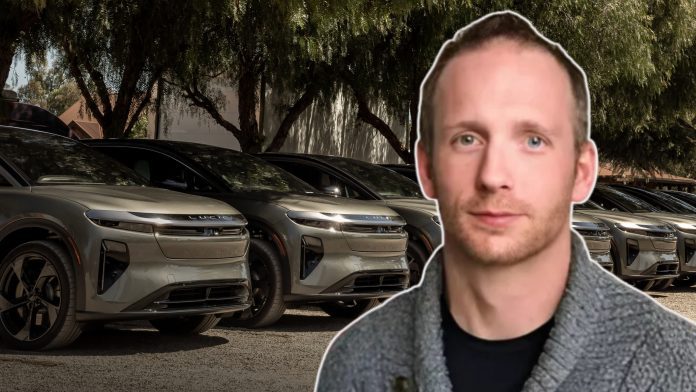Shifts in trade policies, rising tariffs, and the ongoing tensions between the United States and China have exposed the vulnerabilities of the global automotive supply chain. However, Lucid Motors may have found a way to build resilience into its operations.
“Doing more with less is at the heart of sustainability and at the heart of resilience,” said Lucid Motors Vice President James Hawkins during a presentation at AutoTech 2025.
Hawkins outlined the EV maker’s long-term strategy to improve sustainability, reduce risk and enhance vehicle design. At the core of Lucid’s approach is a simplified manufacturing philosophy: reduce the number of parts per vehicle. By minimizing components, Lucid gains greater control over its supply chains, improves sustainability and recyclability and can more easily source materials domestically.
From the beginning, Lucid designed its electric vehicles with the buyer’s needs at the forefront: performance, range, and comfort. Hawkins emphasized that the challenge wasn’t deciding which parts to eliminate but how to deliver these critical features with fewer components.
To support its goals, Lucid’s first focus was on production capacity. In 2021, the automaker opened a one-million-square-foot manufacturing plant in Casa Grande, Arizona. The facility has since expanded to 3.9 million square feet and features an in-house body panel stamping and vehicle assembly.
The next step was strengthening domestic sourcing. In January, the company signed its third U.S.-based graphite agreement, a multi-year deal with Graphite One to boost its American battery supply chain. It also secured a long-term contract with Panasonic Energy in 2022 to supply U.S.-made lithium-ion batteries for its EVs.
Hawkins pointed to the ongoing supply chain instability, which continues to impact the automotive sector. In response, Lucid remains committed to reducing exposure to global shocks by building domestic partnerships and streamlining vehicle architecture, all while maintaining quality.
During his presentation, he showcased a miniaturized motor casing. The component was about the size of a kitchen appliance — compact yet powerful enough to drive a full-sized electric vehicle, illustrating the concept of achieving more with less.
Hawkins concluded his presentation by urging other automakers to reexamine what resilience means in today’s market consistently. He encourages others to identify the risks and devise a strategy to mitigate them.




